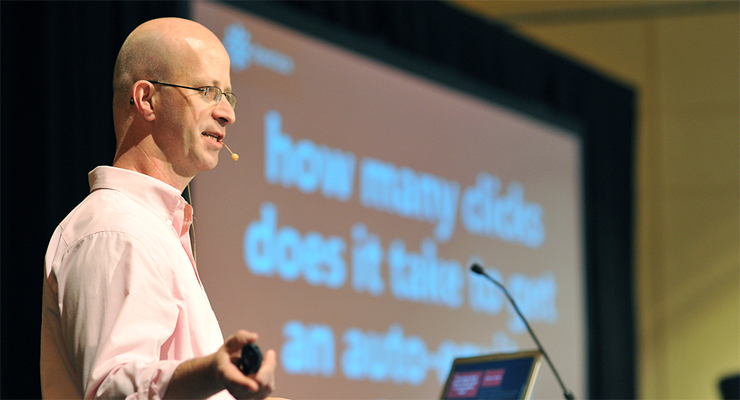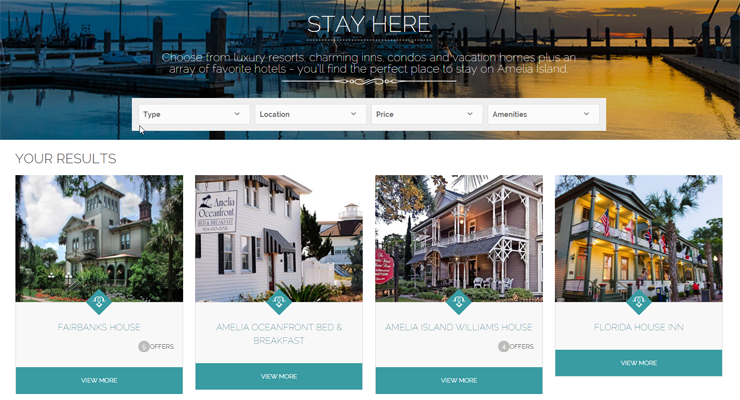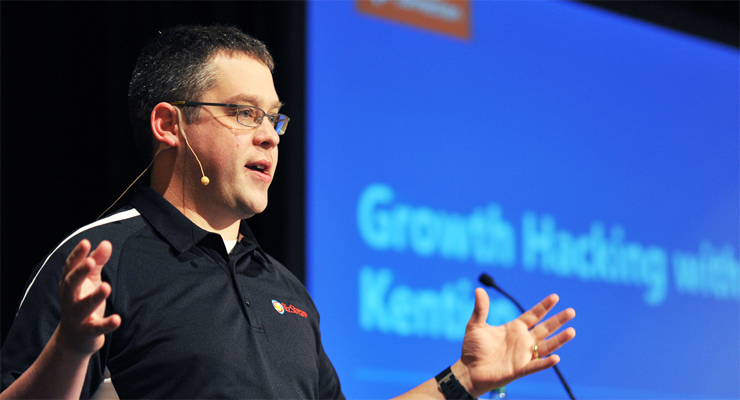3 Marketing Highlights from Kentico Connection Orlando
This year, the marketing track at Kentico Connection in Orlando was packed with 11 presentations. Here are three of them that I found so inspirational that I wanted to recap them for myself, you and anyone who missed them.
10 Strategies to Make EMS Pay for Itself in Less Than a Year
by Nik Friedman TeBockhorst from BlueModus

Online Marketing is about big data, big analytics, and big ideas. The “BIG” aspect might make marketers scared to start with it, and they might be easily lost in overcomplicated scenarios. That’s why Nik simplified all the “big” thinking into ten straightforward strategies to start with immediately to gain positive ROI. Here they are:
- It's not surprising that the first example was marketing automation, which is seen as a big deal for your business but often expensive and seldom used - like a gym membership. As with the abandoned membership, the best thing is just to start using it.
- Anytime you hear the user story that has an individual in it, such as: "if the guy does this, this should happen", start thinking how this fits into your personalization scheme and the customer journey.
- A/B Testing is still important, every landing page or campaign should be tested. As an example, he used his work for a bank offering auto equity loans. When they used short forms they got higher conversions and low-quality leads; long forms brought higher quality but much lower conversions. So it was always only about finding a balance between these two until they split the form into two steps that brought the same quality as the long form but higher conversion rates. But what if the form is split into even more steps? Surprisingly, the bigger number of steps brought not only higher conversion rates but also better quality? So how many steps showed the best results? If you think four to five (which was my guess), think again! 12 steps with one question per step worked best.
- How to illustrate better that a solid workflow for content creation is a must? Nik picked the example of misspelling the antique “Allsopp’s Arctic Ale” at the eBay auction that resulted in a loss of $503,300 among other popular examples of the most costly typos in history.
- One of Nik’s clients faced 67% shopping cart abandonment, so even a simple three step retention email campaign brought a 33% recovery rate from abandoned carts.
- From an example with the same client, Nik showed how Segmentation and Marketing Automation can bring results in an easy way. The simplest drip campaign can be segmented between new registrants and post-purchase buyers. The first group gets introduction emails supporting the decision process while the second gets 10% off bounce-back offers. Such a simple approach got his client 1,080% lift in sales.
- Personalization is one of the other buzzwords of today. If you want to start, simply use three basic personas: Customer, Prospect, and anybody else, and test different personalized content on them.
- If you aren’t sure how to start utilizing lead scoring, Nik recommends to start looking at four basic categories of scoring rules: Site Engagement, Sale Likelihood, Product Interest, and Negative Scores. The positive scores include number of visits, pages, concrete pages, and forms. Negative scores include job listings viewed and competitor IPs.
- Any marketing activities list wouldn’t be complete without content marketing. Nik admitted that it require a lot of discipline and incredible focus across every channel, but it can really pay. The minimum here is to have the right platform to support your efforts and well, again, the discipline.
As with many other TOP TEN lists, this last point was a cop out. Nik left the audience with nine great tips and lots of drive to start leveraging them.
Using Kentico to Build a Digital Destination for the Travel and Tourism Industry, by Jeff McPherson and Derek Barka from SilverTech, Inc.

Amelia Island, one of North America’s top 10 island destinations, worked with SilverTech to transform their website to a digital destination. Their aim was not only to create a responsive and mobile optimized site but also to increase social engagement, as their site suffered from high bounce rates, and, of course, their business goal was to increase the number of visitors and bookings.
Among other improvements including a user driven event calendar and integrations with TripAdvisor and JackRabit, SilverTech implemented Faceted Search for selecting from hundreds of accommodation options at Amelia Island.
Of course, faceted navigation is not always the best way to go, but it is especially useful for extremely large content sets. In these scenarios, there is usually an increase in conversion rates, a decrease in search failure, and users are more satisfied with the search process as they can:
- Find the answer quicker, therefore, be more efficient
- Feel that they are in full control of the decision process
- Decide which additional attributes from the navigation they might need to take into account
What was the result of implementing faceted search in the case of Amelia Island? In the past, the most visited page on the site was the “Image Gallery”, while now it’s “Accommodations” which features the faceted search. So, through that, Amelia Island was able to get more visitors to their main CTA, which is obviously – booking at the accommodations section.
The overall results of the implementation of the site were as follows:
- 62% increase in visits
- 46% decrease in bounce rate
- 450% increase in conversions
Seeing these numbers, I can only congratulate Jeff and Derek on their great work! Still, I was interested in the difference between the ratios of increased visits/users and conversions (62% versus 450%). In his answer, Jeff attributed this to the fact that the site was built with a mobile first design (as 45% traffic comes from mobile) and UX and design improvements of the customer journey.

In his speech, Brian introduced the marketing technique of growth hacking that use creativity, analytical thinking, and social metrics to sell products and gain exposure. As well as its main benefits of being inexpensive when compared to traditional media, it is also scalable by its virality as opposed to its cost.
The very first example of growth hacking was Hotmail, which grew to 12 million accounts in 18 months. What started as a company with $300k was, in a year, sold for $400M. Their way of growth hacking was based on inserting a tagline with a clickable URL into every outbound message: PS: I Love You. Get Your Free Email at Hotmail.
Brian then continued with other examples such as:
- Dropbox (get free space for recommending to a friend);
- American Express (refer a friend for miles);
- UBER (personalized invitation links to gain free rides for every new user);
- Amazon (personalized zones based on purchase);
- Freshbooks (an automated email to each user after the first year anniversary);
But how to start with growth hacking? Brian explained the pirate metrics and the basic plan of having one single goal at a time; know how to measure and know when to pull the plug, if needed.
In the end, Brian provided a few practical examples of growth hacking that can be easily achieved with Kentico CMS:
- Add a social network login as you can increase your website registrations by up to 90%
- Enhance your site with social proof such as testimonials
- Give visitors some value (e.g. whitepaper, analysis…) to get information in return
- Use personalized invitation link
- Implement a better subscription form (available as a free web part at Kentico Marketplace)
Can’t wait to see what case studies and inspirational talks we will see at Kentico Connection Brno this week!